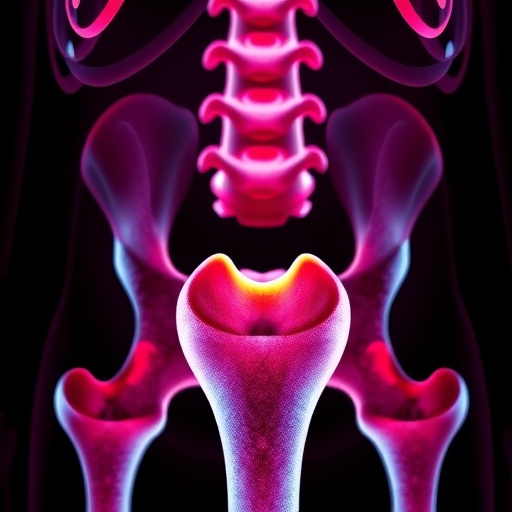FOR IMMEDIATE RELEASE
September 22, 2025
Severe Obesity Severely Limits Participation in Cancer Screening: New Study Reveals Stark Disparities
In a comprehensive cross-sectional analysis published recently in JAMA Network Open, researchers from the Pennington Biomedical Research Center have shed critical light on a troubling correlation between severe obesity and diminished rates of cancer screenings among U.S. adults. The study, titled “Obesity Severity and Cancer Screening in US Adults,” harnessed a vast dataset drawn from the Behavioral Risk Factor Surveillance System (BRFSS), encompassing over two million anonymized profiles stratified by body mass index (BMI). Through rigorous statistical methodologies, the research team established that individuals with a BMI of 50.0 or greater not only face unique physiological challenges but also encounter systemic barriers resulting in significantly lower engagement with recommended cancer screening protocols.
Cancer screenings are cornerstone preventive measures, fundamental in the early detection and treatment of malignancies including colorectal, cervical, breast, and prostate cancers. These interventions have a proven record of reducing cancer morbidity and mortality. Despite such benefits, the new findings illuminate a clear disparity in screening adherence within populations experiencing severe obesity—a demographic often underrepresented in clinical preventive care metrics. The researchers identified marked reductions in screening rates for Papanicolaou tests (Pap smear), mammography, sigmoidoscopy, and colonoscopy for those in the highest BMI bracket compared to the normative BMI reference group of 18.5 to 29.9.
This disparity suggests the interplay of multifactorial obstacles. Dr. Vance Albaugh, Assistant Professor of Metabolic Surgery at Pennington Biomedical and affiliated with the Metamor Institute, points out, “Our findings highlight an urgent and overlooked gap in healthcare delivery. Individuals with severe obesity face not only anatomical and technical challenges but also accessibility issues within the current clinical infrastructure.” He further elaborates that conventional screening methods often require specialized equipment and accommodations rarely available or routinely implemented in healthcare settings serving this population.
The study’s methodology was robust, excluding profiles lacking precise BMI data to maintain cohort integrity. The final dataset was stratified into distinct BMI categories: 30.0 to 34.9, 35.0 to 39.9, 40.0 to 49.9, exceeding 50.0, and a reference group with BMI ranging from 18.5 to 29.9. This granular approach enabled a nuanced understanding of how cancer screening uptake varies not just with obesity presence but with its severity. Interestingly, the categories representing mild to moderate obesity (BMI 30.0 to 39.9) exhibited similar or marginally increased screening rates relative to the reference group. This suggests that individuals within these ranges might maintain better healthcare engagement or experience fewer impediments than those with extreme obesity levels.
Technical limitations further compound these challenges. Standard screening devices and protocols are often calibrated for average body sizes, leading to potential inaccuracies or discomfort when applied to severely obese individuals. For instance, mammography can be technically arduous as standard mammography machines may fail to accommodate large breast volumes adequately, potentially resulting in incomplete imaging or misdiagnosis. Colonoscopy, a highly effective diagnostic follow-up for colorectal screening tests, is similarly complicated by procedural risks and technical difficulties associated with body habitus extremes. Consequently, providers may be reluctant to recommend or perform such screenings, inadvertently perpetuating underdiagnosis in this vulnerable group.
Emerging self-administered, home-based cancer screening modalities offer some hope. Tests such as fecal immunochemical tests (FIT) and HPV self-swabs reduce reliance on clinical visits and could theoretically increase screening adherence among populations facing physical or systemic barriers. However, as Dr. Albaugh cautions, “While promising, these home-based tests depend heavily on appropriate clinical follow-up. For example, a positive FIT necessitates colonoscopy for definitive evaluation, underscoring the need for integrated care pathways robust enough to support these patients beyond initial testing.”
The research underscores a critical need for research and policy initiatives targeted at optimizing cancer screening accessibility and effectiveness for severely obese individuals. Designing and implementing adaptive screening technologies, improving provider training on obesity-related healthcare delivery, and expanding healthcare system capacity to appropriately accommodate and support these patients are paramount goals. Moreover, targeted public health campaigns are necessary to raise awareness among patients and providers alike regarding the heightened risks and screening importance within this demographic.
Dr. John Kirwan, Executive Director of Pennington Biomedical, emphasized the broader implications of these findings: “This study not only delineates a concerning healthcare disparity but also serves as a call to action. We must intensify efforts to understand the root barriers—be they physical, psychosocial, or systemic—that inhibit screening participation in those with severe obesity. Early detection remains our best weapon against cancer, and equitable access to these preventive services is a foundational healthcare right.”
The Pennington Biomedical Research Center continues to lead pioneering work examining the interrelations between metabolic health disorders and chronic disease risk factors. With a research enterprise supported by over 600 staff and a network of specialized clinics and laboratories, the Center is uniquely positioned to catalyze innovations that span molecular science to societal health interventions. This latest investigation contributes a vital piece to the complex puzzle of how obesity severity modulates health outcomes and healthcare utilization.
As the prevalence of severe obesity rises in the United States, with significant implications for public health, addressing gaps in preventive care becomes even more urgent. By enhancing cancer screening frameworks to accommodate anatomical differences and removing logistical barriers, the healthcare system can progress toward reducing cancer-associated morbidity and mortality in this high-risk group. The study’s revelations impel clinicians, researchers, policymakers, and patient advocates to convene interdisciplinary strategies aimed at bridging these gaps.
In conclusion, the Pennington Biomedical study provides a compelling evidentiary basis underscoring severe obesity as a negative determinant of cancer screening compliance. Overcoming these disparities requires innovation in both clinical technology and healthcare delivery models, alongside intensified patient engagement and education efforts. The goal remains unequivocal: ensuring all individuals, irrespective of BMI, receive timely, efficacious cancer screening and thereby improving early detection and survival outcomes nationwide.
Subject of Research: People
Article Title: Obesity Severity and Cancer Screening in US Adults
News Publication Date: September 22, 2025
Web References: www.pbrc.edu
References: Published in JAMA Network Open on 17-Sep-2025, DOI: 10.1001/jamanetworkopen.2025.32402
Keywords: Cancer screening, Obesity, Preventive care, Metabolic health, Colorectal cancer, Breast cancer, Cervical cancer
Tags: body mass index and health outcomesbreast cancer screening adherencecervical cancer prevention measurescolorectal cancer screening challengesdisparities in cancer screening ratesearly detection of malignanciesJAMA Network Open research findingsobesity impact on health care accesspreventive measures for cancer detectionprostate cancer screening guidelinessevere obesity and cancer screeningssystemic barriers to cancer screenings





